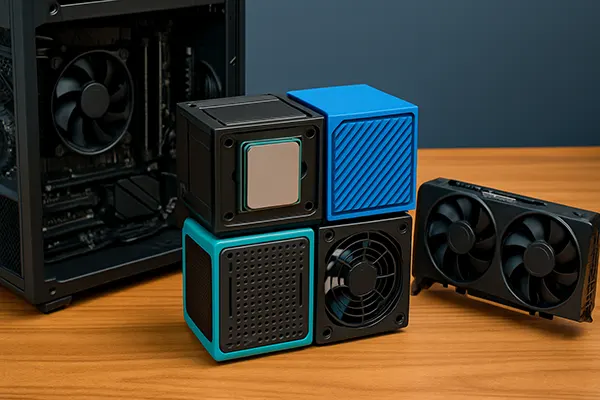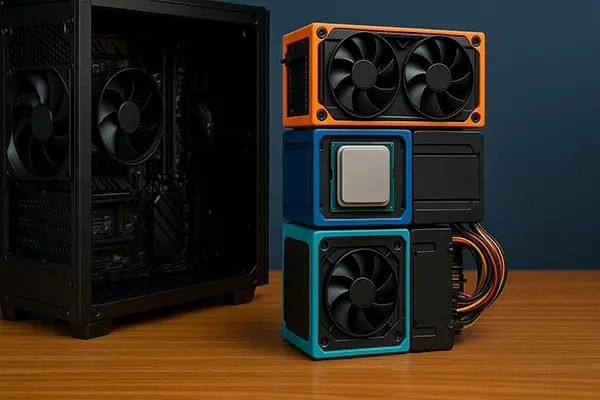
Modular PCs: Will Standardized Blocks Replace Classic Builds by 2030?
The concept of modular PCs has been evolving rapidly, with manufacturers focusing on creating standardized, easily replaceable parts. As the technology continues to develop, the question arises: will these modular systems eventually replace traditional custom-built PCs by 2030? This article explores the current state of modular PC technology, potential future advancements, and the challenges that could affect their widespread adoption.
The Rise of Modular PCs
In recent years, modular PCs have gained significant attention due to their potential for easy upgrades and maintenance. These systems typically feature standardized components that can be swapped out without the need for technical expertise. Brands like Razer and Framework have pioneered some of the most notable modular PC designs, focusing on user-friendly assembly and customization.
The primary appeal of modular PCs lies in their flexibility. Unlike traditional PC builds, where individual components require technical knowledge for installation, modular systems use plug-and-play technology. This approach not only simplifies the building process but also reduces the risk of component incompatibility.
However, modular PCs are not without their challenges. One of the key issues is the limited availability of compatible parts. While manufacturers may promise upgradeable designs, the reality often involves waiting for proprietary modules or dealing with limited supplier networks.
Advantages Over Traditional Builds
One of the biggest advantages of modular PCs is their potential for longevity. Instead of replacing an entire system, users can update individual components as newer versions become available. This approach not only saves money but also reduces electronic waste.
Additionally, modular PCs are designed to be user-friendly. The simple, standardized connections make it possible for even novices to perform upgrades. This feature is particularly appealing in a market where technical knowledge is a significant barrier for many potential users.
Modular systems also offer a level of aesthetic uniformity that traditional builds often lack. Many modular designs emphasize sleek, minimalist looks, appealing to consumers who prioritize both form and function.
Technological Challenges Ahead
Despite the promising aspects of modular PCs, several technological challenges could hinder their full adoption by 2030. The most pressing issue is performance optimization. Unlike custom builds, modular PCs may suffer from performance bottlenecks due to the standardization of components.
For example, integrating high-performance graphics cards or specialized cooling systems within modular frameworks remains problematic. As components become more advanced, ensuring compatibility with modular designs requires a level of foresight that manufacturers are still struggling to achieve.
Moreover, the durability of modular connectors is a concern. Regular swapping of parts may degrade connection points, leading to hardware failures over time. Addressing this issue will be crucial for modular PCs to compete with the robust construction of traditional builds.
Market Reception and Adoption
The reception of modular PCs in the market has been mixed. While enthusiasts appreciate the concept, many remain skeptical of its practicality. The limited availability of modular components and the potential for brand-specific ecosystems can alienate users accustomed to the freedom of traditional PC building.
Furthermore, the price point of modular PCs is often higher compared to conventional builds. Consumers may hesitate to invest in modular technology when traditional options offer better performance per dollar. Lowering costs and increasing component availability are essential for broader adoption.
Despite these challenges, modular PCs continue to gain traction, particularly among tech enthusiasts seeking sustainable computing solutions. Their potential to minimize electronic waste aligns with growing environmental awareness, positioning them as a viable option in the long term.

The Future of Modular Computing
Looking ahead, the success of modular PCs hinges on collaboration between hardware manufacturers and standard-setting organizations. If industry leaders can agree on universal standards, modular PCs could become a mainstream alternative to custom builds.
Moreover, the rise of AI-driven configuration systems could simplify the modular assembly process even further. By leveraging machine learning, users could receive real-time recommendations on compatible upgrades, reducing the guesswork involved in maintaining a modular PC.
However, for modular PCs to fully replace classic builds by 2030, significant advancements in durability, compatibility, and affordability are required. Addressing these issues will determine whether modular computing becomes the standard or remains a niche market for enthusiasts.
Will Modular PCs Truly Dominate?
While modular PCs present an exciting future, they still face substantial hurdles in becoming the default option for personal computing. The challenge of balancing performance, cost, and user accessibility remains a significant barrier.
Ultimately, the modular PC movement reflects a growing desire for sustainable and upgradable technology. Whether these systems will entirely replace traditional builds by 2030 is uncertain, but they are likely to coexist, catering to different user needs and preferences.
As technology continues to evolve, keeping an eye on how modular systems adapt and overcome current limitations will be crucial. For now, traditional PC building remains the preferred choice for performance enthusiasts, but the future may tell a different story.



